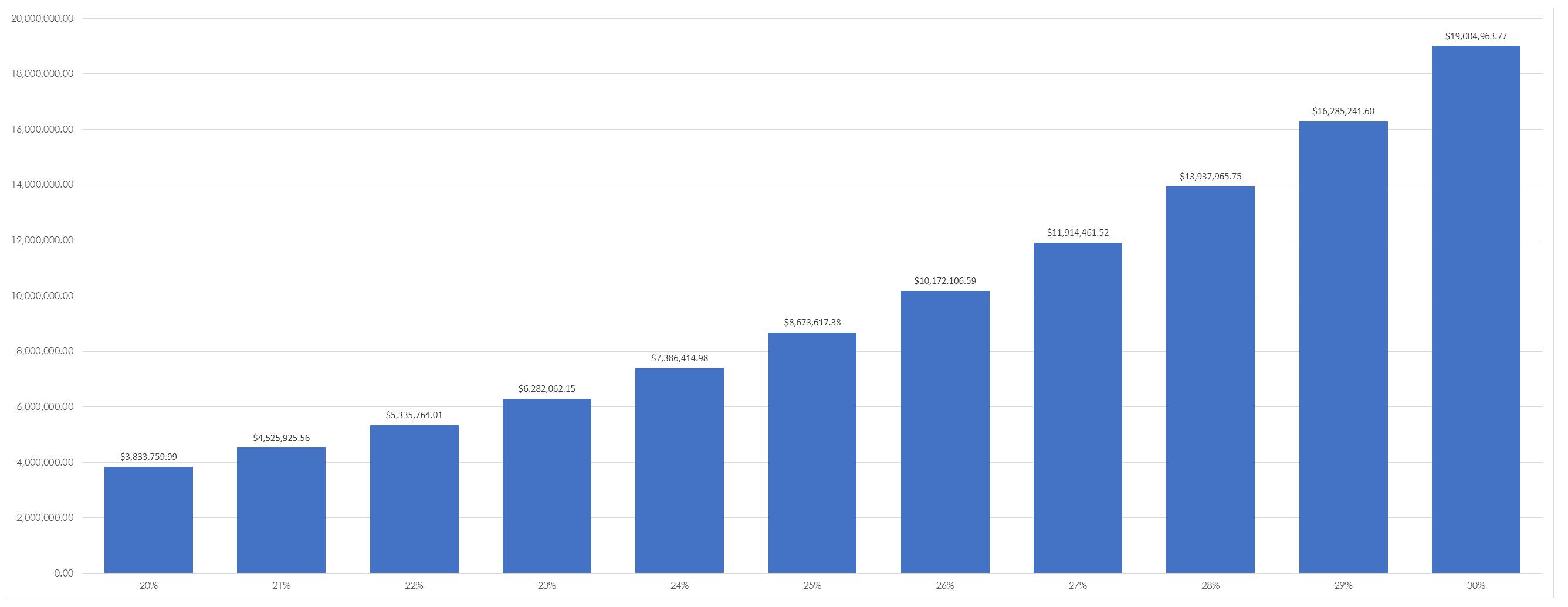LB and I are in the process of going through a series of trading plans and I found the chart below in one of the back and forth bits of communication we have been having with a mentoree. I have always been fascinated by growth curves of various sorts I suppose it comes from a fascination with things such as logarithms and Euler’s number that I had at school. The broad application of compounding to things such as investment is blindingly obvious and can be summed up simply as money makes money but without traders and investors actually looking at such curves they dont see the power of compounding. The chart below looks at an initial $100,000 invested over 20 years at rates of return in 1% intervals from 20% to 30%.
The difference between the capital return on 20% versus 21% is $692,165,57 or 18% yet the difference in return is only 1% – at higher values the differential just becomes silly. The lesson I have always taken from this is one of cost control. Businesses including trading need to control costs. This is not so easy in trading as our fixed overheads are generally quite low, things such as brokerage are largely non issues, it is very different from when I first start trading where brokerage, stamp duty and orders fees were major impost upon trading. However, it doesn’t take much to broaden the definition of business cost to things such as slippage and here I am using the term slippage to indicate not where you wanted to get out and did but rather your inability to get out due to a simple failure to execute your stop. There is largely no technical reason for slippage now with broker execution being so much better than it used to be. In the olden days brokers didn’t even know what stops were. Slippage occurs now generally as a failure of the trader to imply execute because of a psychological inability to take their stops. Improving your ability to not haemorrhage money not keeps you in the game longer it actually improves your return over the long term. Tiny differences in the beginning make enormous differences at the end.





